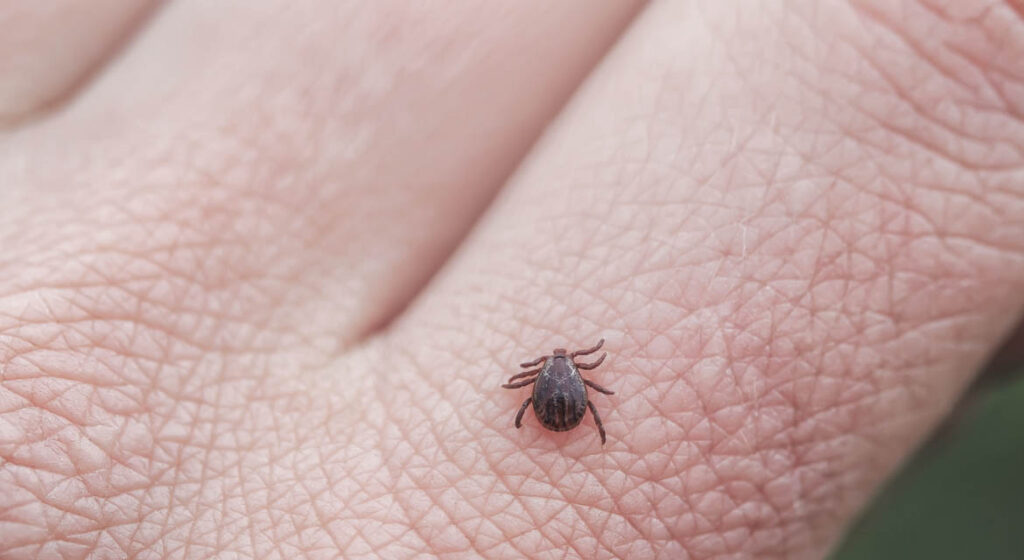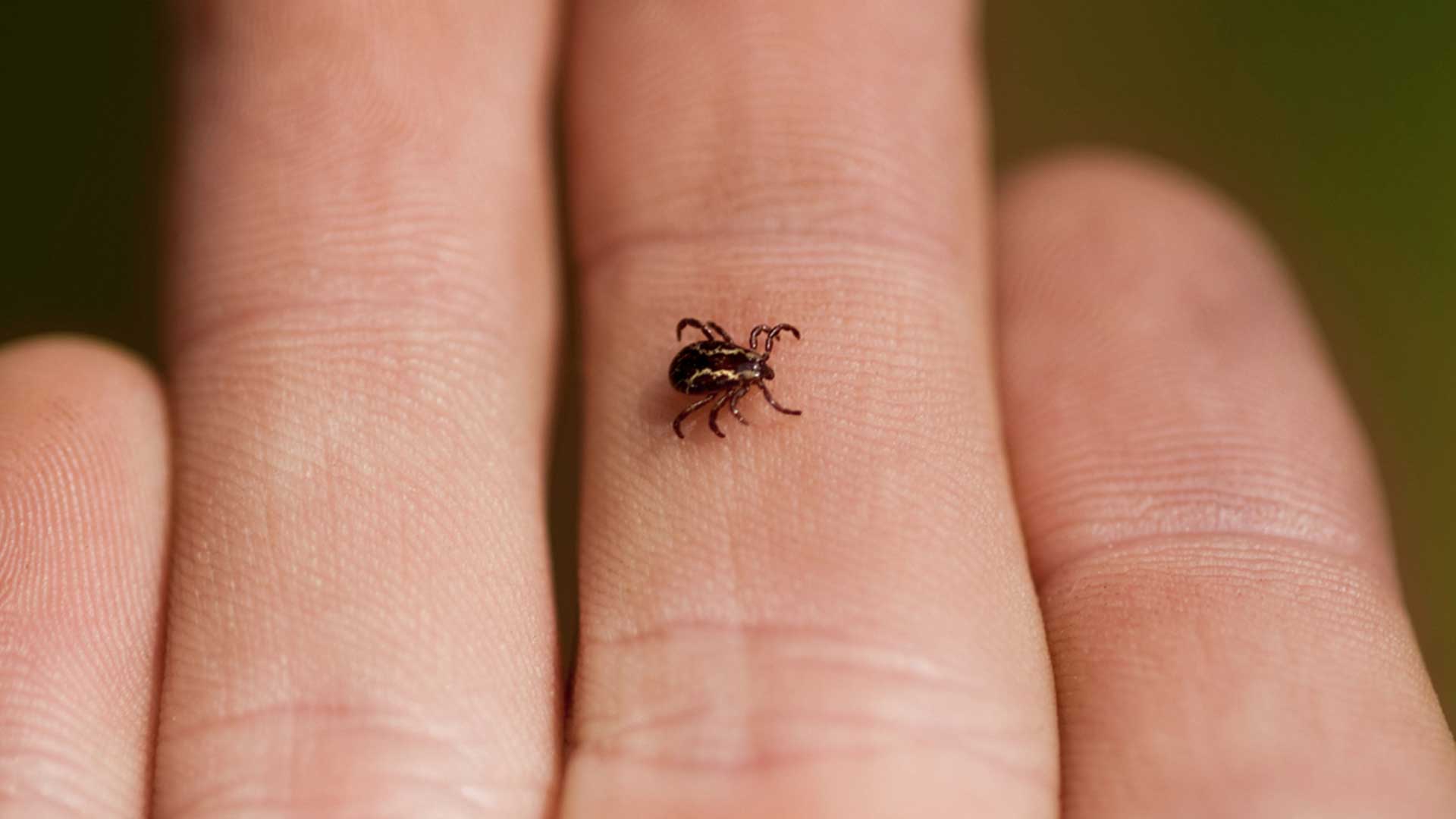
Can Ticks Infest My Home, and How Can I Eliminate Them?
Ticks are small, parasitic arachnids that often live in wooded areas or tall grasses. But did you know that they can also infest your home? These tiny pests can latch on to pets and humans and make their way into your house, where they can reproduce and create a full-blown infestation. Here are three key points to keep in mind:
- Ticks can infest your home through pets, clothing, or gaps, and they can hide in carpets and furniture, leading to an infestation if not addressed.
- To eliminate ticks from your home, thorough cleaning, vacuuming, washing, targeted pesticide treatments, and preventive measures such as pet bedding maintenance and outdoor space management are crucial.
- Preventing tick infestations involves yard maintenance, minimizing contact with infested areas, checking for ticks on pets and clothing, using repellents, and seeking professional help for effective control and prevention methods tailored to your situation.
Signs of a Tick Infestation in Your Home
Since ticks are small pests that can attach themselves to your body, they can be hard to spot. But by understanding the different signs of tick activity, you can recognize their presence before one or two ticks become a full infestation.
Check Yourself and Pets for Ticks
First and foremost, if you or your pets have been spending time outside, it’s essential to check your bodies for ticks. This is especially important if you’ve been walking in natural tick habitats like tall grasses, shrubbery, and other moist and shady areas. Since ticks feed on blood, you may find a tick crawling on top of your skin or an embedded tick with its head submerged under your skin.
If you find one or two ticks, it’s possible that they hitched a ride into your home, and you don’t have an infestation. However, if you’re finding multiple ticks on a daily basis, it’s likely that there are many more hiding in your home.
Look for Bites, Rashes, or Other Skin Reactions
Bites, rashes, or skin reactions could indicate a tick infestation. When ticks on humans bite, they latch onto the skin and feed on blood. These bites can cause localized redness, itching, and inflammation, resembling small, raised bumps. Tick saliva contains substances that can irritate the skin, leading to allergic reactions in some individuals.
In certain cases, an infected tick bite can transmit diseases such as Lyme disease or Rocky Mountain spotted fever, which can manifest as distinct rashes on the skin. Therefore, if you experience unexplained bites, persistent rashes, or unusual skin reactions, particularly after spending time in tick-prone areas, it is important to consider the possibility of a tick infestation and seek appropriate medical attention immediately.

Truly Nolen GUARANTEE
If you’re not completely satisfied, you’ll get a full refund on your most recent service with our 100% money back guarantee.

$50 Off Year Round Pest Control
Truly Nolen is a family-owned company with 85 years of experience providing the best pest control. If you’re not completely satisfied, you’ll get a full refund on your most recent service with our 100% money back guarantee.
Finding Tick Eggs and Larvae
Discovering tick eggs and larvae in your home can serve as a clear sign of a tick infestation. Tick eggs are typically small, round, brown or red in color, and may be translucent. Tick larvae, also known as seed ticks, are tiny ticks that can resemble poppy seeds. Both eggs and larvae are often found in damp, protected environments, such as household corners, baseboards, cracks, and crevices. You may also find them living on nearby fabrics, such as pet bedding, furniture, carpets, and clothing.
If you discover tick eggs or larvae, it is advisable to take prompt action to address the infestation, as these young ticks will eventually develop into nymphs and adult ticks, increasing the risk of bites and potential disease transmission.
Spotting Adult Ticks in Your Home
The presence of multiple adult ticks in your home can be a strong sign of a tick infestation. Discovering adult, engorged ticks inside, especially if they are present in several rooms, suggests that ticks have successfully established themselves indoors.
It’s important to note that adult ticks are usually the result of an infestation cycle, indicating the potential presence of eggs, larvae, and nymphs in your environment as well. Taking immediate action to address the infestation, including thorough cleaning, vacuuming, and seeking professional pest control assistance, is crucial to eliminate ticks from your home.
Notice Unusual Tick-Related Symptoms in Humans and Pets
Tick infestations can lead to unusual physical and behavioral symptoms in both humans and pets. In humans, these symptoms can include unexplained fatigue, muscle or joint aches, headaches, fever, and general malaise. Some individuals may experience neurological symptoms such as confusion, dizziness, or difficulty concentrating. Additionally, ticks can transmit infections that affect the immune system, potentially leading to a weakened immune response.
In pets, symptoms may manifest as excessive scratching, licking, or biting at the site of a tick bite, hair loss or thinning, restlessness, irritability, or changes in appetite. Behavioral changes, such as increased aggression or withdrawal, can also occur. It’s important to note that these symptoms can be nonspecific and may overlap with other medical conditions. So, consulting a healthcare professional or veterinarian is crucial to determine the underlying cause and provide appropriate treatment.
Causes of a Tick Infestation in Your Home
Tick infestations can pose a significant concern when they find their way into your living space. Understanding the common causes of tick infestations is crucial for prevention and effective control.
Pets and Wildlife Can Bring Ticks Into Your Home
Tick infestations in your home can occur through various means. One common cause is the presence of pets. Ticks easily attach themselves to pets while they’re outside and can hitch a ride into the home. Once indoors, they can transfer onto other animals or humans. Regularly checking your pets for ticks and utilizing preventative measures like tick collars or topical treatments is essential if you have furry companions.
Ticks can also enter your home via wildlife and other pests. They might be brought into your yard by wild animals, such as deer or raccoons, and then make their way inside. Additionally, ticks can directly enter your home by latching onto rodents or other household pests. To minimize the risk, it’s important to maintain a clutter-free yard and trim back vegetation that could attract wildlife or pests.
Ticks Can Enter Your Home on Contaminated Items
Ticks can find their way into your home by hitchhiking on contaminated clothing or items. When spending time in tick-infested areas, ticks can easily attach themselves to your clothing, gear, or outdoor equipment. If not properly addressed, these ticks can be carried inside your home, potentially leading to an infestation.
It’s crucial to inspect and thoroughly shake off any clothing or items after outdoor activities in tick-prone environments. Additionally, washing and drying clothing on high heat can effectively kill any ticks that may be present. Taking these precautions helps minimize the risk of introducing ticks into your living space through contaminated items and helps maintain a tick-free home environment.
Outdoor Habitats Can Lead to a Tick Infestation Inside
The outdoor conditions surrounding your home can play a significant role in contributing to a tick infestation inside your home. If your property has dense vegetation, tall grass, or wooded areas nearby, it creates an environment that is favorable for ticks to thrive. Ticks can easily crawl onto the grass or foliage and attach themselves to passing humans or animals. They can then be transported into your home through open doors, windows, or even hitch a ride on pets or clothing.
Regularly maintaining your outdoor spaces by keeping the grass trimmed, removing leaf litter, and creating a clear space between vegetation and your home can help reduce the likelihood of ticks infesting your living areas. By creating a less hospitable environment for ticks near your home, you can minimize the risk of a tick infestation inside.
A Lack of Pest Control Measures May Cause a Tick Infestation
A lack of proper pest control measures can leave your home vulnerable to a tick infestation. Without regular preventative actions, such as treating outdoor areas or using tick repellents, the tick population can increase unchecked around your property.
Ticks can easily find their way indoors through open doors, windows, or gaps in the structure. Once inside, they can quickly reproduce and spread throughout your living spaces, posing a risk to both humans and pets. Implementing effective pest control measures, such as regular inspections, targeted treatments, and preventive measures like tick repellents, can help mitigate the risk of a tick infestation inside your home and ensure a safer living environment.
How To Prevent Ticks From Infesting Your Home
Preventing tick infestations in your home is essential to protect your family and pets from potential health risks. By implementing a few simple measures, you can significantly reduce the chances of ticks taking up residence indoors. Here are some practical tips to prevent ticks from infesting your home:
1. Keep Your Yard Tidy
Ticks love to hide in tall grasses and leaf piles, so it’s essential to keep your yard well-maintained. Trim your grass regularly and rake up any fallen leaves to prevent tick populations from building up.
2. Use Tick Repellent
There are several insect repellents that are effective against ticks, such as DEET, picaridin, and permethrin. Apply these repellents regularly when you spend time outside, especially if you live in an area with high tick populations. You can find different repellants for your body, your pets, and your clothing or outdoor gear.
3. Check Yourself and Your Pets
After spending time outdoors, be sure to check yourself and your pets for ticks. Look in the hard-to-see places like around the ears, under the arms, in hair, and in the belly button. If you spot a tick, remove it immediately using tweezers or a tick-removing tool.
4. Create Tick Barriers
Tick barriers can be established using various materials, such as gravel, wood chips, and fences, to help prevent ticks from entering your yard. Gravel and woodchip barriers can create a dry and inhospitable environment for ticks, making it more difficult for them to move across the area. Fences, whether solid or mesh, can serve as an effective means of keeping ticks and tick-carrying animals away from your yard, providing an additional layer of protection against infestations.
5. Use Tick Control Treatments
There are several tick control treatments available that can help keep them away from your home. These treatments include pesticides, sprays, and foggers, which can be used both indoors and outdoors to kill ticks and prevent future infestations.
How Truly Nolen Pest Professionals Treat Tick Infestations
Ticks can be a nuisance in any home, with their presence causing discomfort and even health problems. From deer ticks and American dog ticks to black-legged ticks and more, these small arachnids can be hard to detect and even harder to eliminate. Thankfully, Truly Nolen Pest Professionals has the expertise and resources needed to take care of even the worst tick infestations.
The first step in treating a tick infestation is to identify the species or type of tick that is present. Different species require different treatment methods, and Truly Nolen’s experts have the knowledge necessary to make this determination quickly and accurately.
Once the species has been identified, the next step is to locate the source of the infestation. This can be a challenge, as ticks can be found all throughout a property, from tall grasses and leaf litter to pets and their bedding. The professionals at Truly Nolen use advanced techniques to locate all of the hiding spots where ticks may be found, including using artificial intelligence-powered tools.
After the source of the infestation has been located, the next step is to eliminate all adult ticks that are present. Tick removal can be accomplished using various methods, including insecticides, bug bombs, and even electrical outlets that emit a frequency that repels ticks. Truly Nolen uses only the safest and most effective methods to eliminate adult ticks and ensure that they won’t return.
If you’re experiencing a tick infestation in your home, don’t wait — contact the professionals at Truly Nolen Pest Professionals today. With their expertise and experience, they can quickly and effectively eliminate these pesky parasites and help you restore a clean and safe living environment.

$50 Off Year Round Pest Control
Truly Nolen is a family-owned company with 85 years of experience providing the best pest control. If you’re not completely satisfied, you’ll get a full refund on your most recent service with our 100% money back guarantee.
Frequently Asked Questions
How do I prevent tick bites and reduce the risk of tick infestations?
To prevent tick bites and infestations, it is recommended to use insect repellents containing DEET, wear long sleeves and pants in wooded or grassy areas, perform thorough tick checks after outdoor activities, keep your lawn well-maintained, and create a barrier between wooded areas and your yard.
What are the symptoms of tick-borne diseases, and when should I seek medical attention?
Symptoms of tick-borne diseases vary, but common ones include fever, rash, fatigue, muscle aches, and joint pain. If you experience these symptoms after a tick bite or potential exposure, especially in an area where tick-borne diseases are prevalent, it is advisable to seek medical attention promptly.
How can I safely remove a tick from my body or my pet?
To safely remove a tick, use fine-tipped tweezers, grasp the tick as close to the skin surface as possible, and pull upward with steady pressure. Avoid twisting or jerking the tick, and clean the bite area with soap and water. If removing a tick from a pet, consult a veterinarian for proper guidance. Learn More!
Can ticks infest my home, and how can I eliminate them?
Yes, ticks can infest homes, especially if they latch onto humans or pets indoors. To eliminate ticks, thorough cleaning, vacuuming, and washing of infested areas is essential. Additionally, professional pest control services may be necessary to ensure complete eradication and prevent future infestations. Learn more about ticks
What are the risks of tick bites and tick-borne diseases?
Tick bites can transmit various diseases, such as Lyme disease, Rocky Mountain spotted fever, babesiosis, and anaplasmosis, among others. These diseases can cause a range of symptoms, from mild to severe, and may lead to long-term health complications if left untreated. Prompt diagnosis and appropriate treatment are crucial in managing tick-borne diseases.

